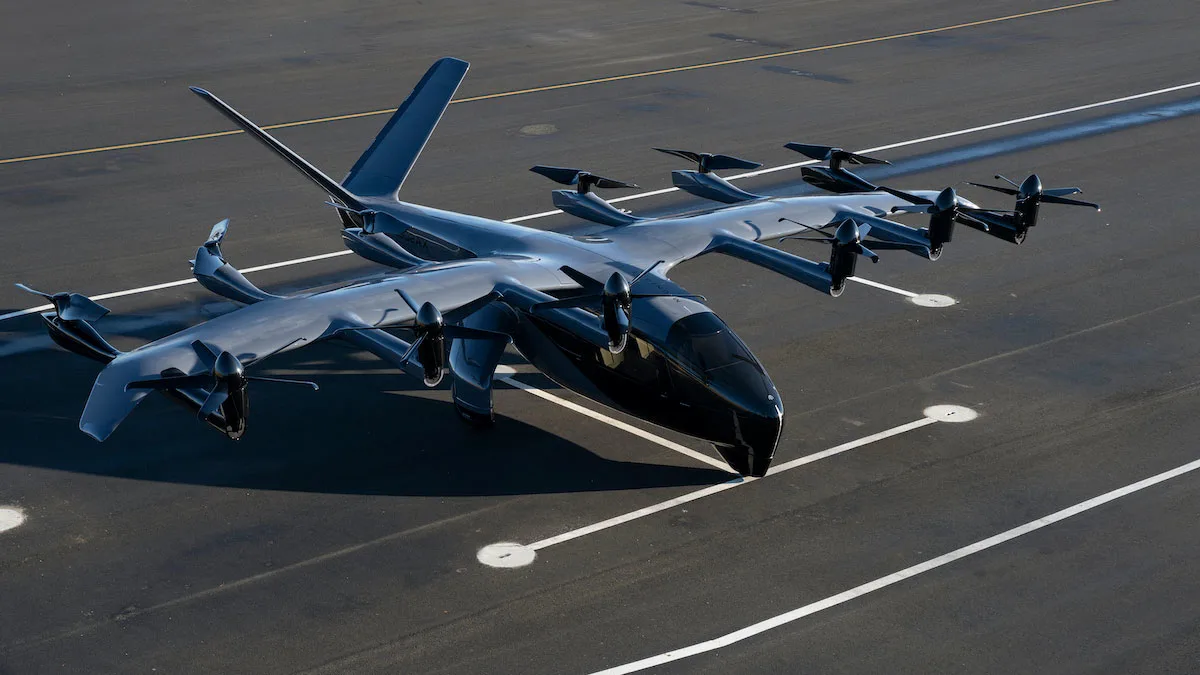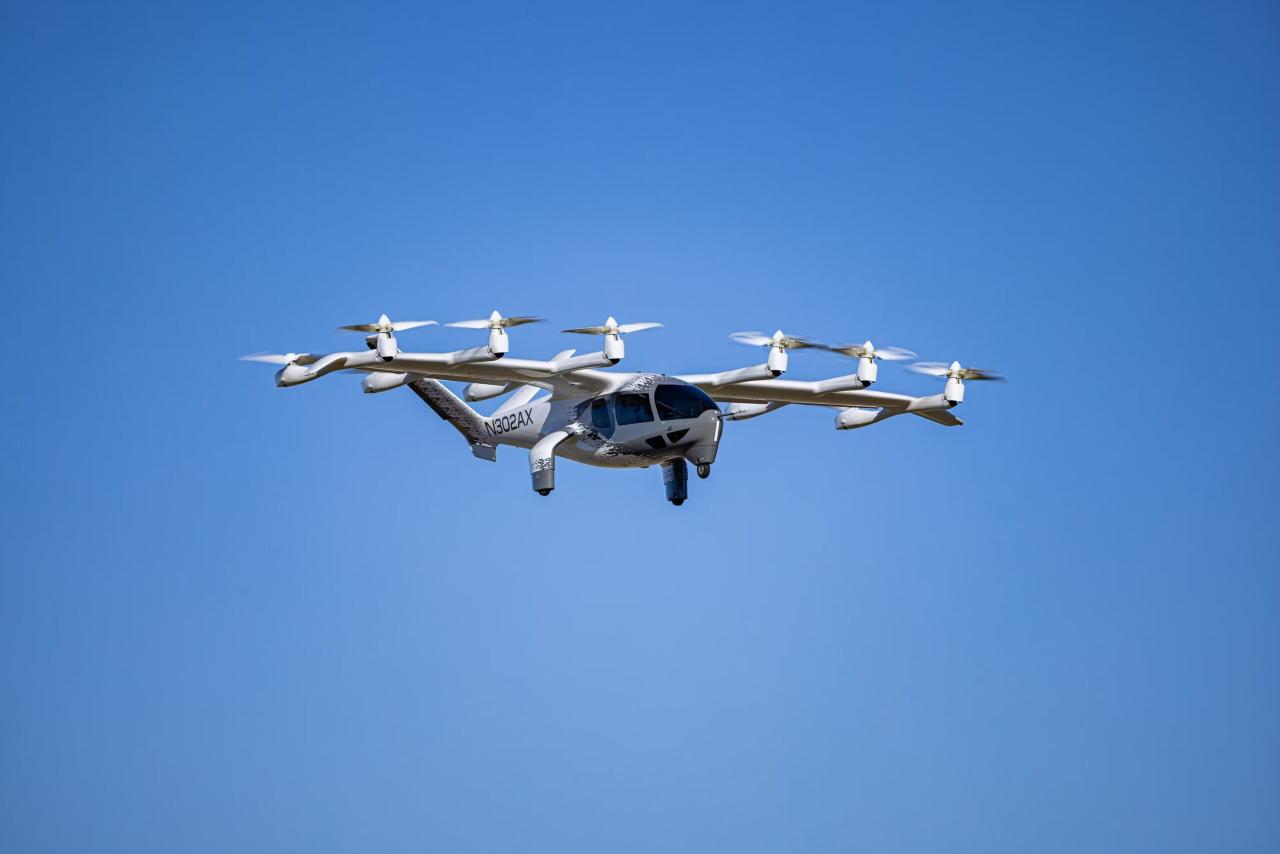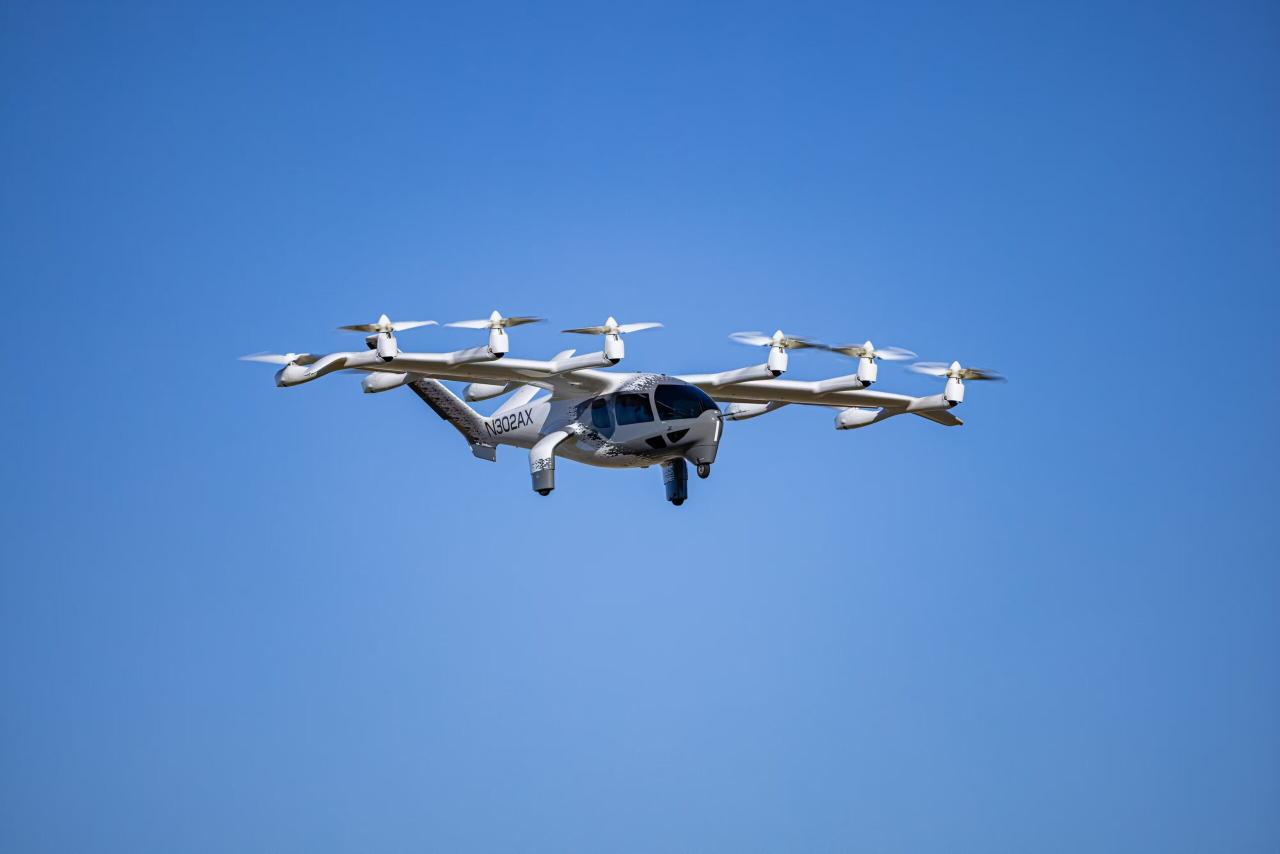Archer Aviation is revolutionizing air travel with its innovative electric vertical takeoff and landing (eVTOL) aircraft. The company’s ambitious vision targets a future where urban air mobility is both efficient and sustainable. This exploration delves into Archer’s business model, technological advancements, market position, financial performance, and operational strategies, providing a comprehensive overview of this pioneering company in the burgeoning eVTOL sector.
We’ll examine its competitive landscape, assess its potential for growth, and consider the challenges and opportunities that lie ahead.
Archer’s unique approach to eVTOL design and manufacturing, coupled with its strategic partnerships and funding, positions it as a key player in the race to redefine personal and commercial air travel. This analysis will examine the factors contributing to Archer’s success, as well as the potential risks and rewards associated with its ambitious goals. We’ll consider the regulatory hurdles, market dynamics, and technological advancements shaping the future of urban air mobility, and how Archer is navigating this complex landscape.
Archer Aviation’s Business Model
Archer Aviation aims to revolutionize urban air mobility through the development and operation of electric vertical takeoff and landing (eVTOL) aircraft. Their business model centers around providing on-demand air taxi services, focusing on efficiency and scalability.
Core Business Operations and Revenue Streams
Archer’s primary revenue stream will be derived from providing air taxi services to passengers. They plan to generate revenue through per-flight fares, similar to ride-sharing services but in the air. Additional revenue streams could potentially include aircraft sales to other operators and maintenance contracts. The company’s operational model incorporates a network of vertiports, acting as takeoff and landing points for their eVTOL aircraft, strategically located in urban areas to optimize accessibility and efficiency.
Target Market and Customer Demographics
Archer’s target market includes commuters and travelers seeking faster and more efficient transportation options within urban areas. Their customer demographics are expected to be a mix of business professionals, tourists, and individuals who value time and convenience. The initial focus will likely be on affluent customers willing to pay a premium for a faster commute, before expanding to a broader market as prices decrease with technological advancements and economies of scale.
Competitive Advantages in the eVTOL Market
Archer’s competitive advantages lie in its technological innovation, strategic partnerships, and focus on operational efficiency. Their aircraft design prioritizes speed, range, and passenger comfort. Strategic collaborations with established aerospace companies provide access to crucial resources and expertise, expediting development and certification. The company’s emphasis on efficient operations, including vertiport network development and maintenance strategies, aims to minimize costs and maximize profitability.
Comparison to Competitors’ Business Models
While direct comparisons are difficult due to the nascent nature of the eVTOL market, Archer’s business model can be contrasted with companies like Joby Aviation and Lilium. Joby focuses on a broader range of applications, including cargo transport, while Lilium emphasizes longer-range travel. Archer differentiates itself by focusing on shorter-range, urban air taxi services, aiming for high frequency and scalability in a densely populated market.
SWOT Analysis of Archer Aviation’s Current Business Strategy
- Strengths: Innovative aircraft design, strong partnerships, experienced management team, first-mover advantage in certain markets.
- Weaknesses: Dependence on securing further funding, regulatory uncertainties, potential technological challenges in scaling production.
- Opportunities: Rapidly growing urban air mobility market, potential for expansion into various sectors, strategic acquisitions.
- Threats: Intense competition from other eVTOL developers, economic downturns affecting investment, potential safety concerns impacting public acceptance.
Technology and Innovation
Archer’s technological advancements are central to its success in the eVTOL market. The company’s approach to aircraft design, propulsion systems, and manufacturing processes reflects a commitment to innovation and efficiency.
Archer’s eVTOL Aircraft Design and Specifications
The Archer Midnight eVTOL aircraft is designed for urban air mobility, featuring a unique distributed electric propulsion system. The aircraft incorporates six tilting rotors for vertical takeoff and landing, transitioning to horizontal flight for efficient cruising. The design emphasizes safety, reliability, and passenger comfort, incorporating features like redundant systems and advanced avionics. Specific details regarding passenger capacity, range, and maximum speed are proprietary information, but publicly available information suggests a capacity of at least four passengers and a range suitable for urban commuting.
Key Technological Innovations Incorporated into the Aircraft
Archer’s aircraft incorporates several key technological innovations, including advanced battery technology, efficient electric motors, and sophisticated flight control systems. The distributed electric propulsion system offers redundancy and enhanced safety, while the use of lightweight composite materials contributes to the aircraft’s efficiency. Advanced sensor systems and autonomous flight capabilities are also being integrated for improved safety and operational efficiency.
Challenges in Developing and Certifying the Aircraft
Developing and certifying a new type of aircraft presents significant challenges. Archer faces hurdles related to battery technology, regulatory approvals, and the integration of various complex systems. Ensuring the safety and reliability of the aircraft is paramount, requiring rigorous testing and validation procedures. The certification process itself can be lengthy and costly, potentially delaying market entry.
Comparison of Archer’s Aircraft Technology to Competitors

Archer’s technology compares favorably to competitors in several aspects, but direct comparisons are limited by the proprietary nature of some technologies. However, Archer’s distributed propulsion system offers a unique approach compared to some competitors who employ different configurations. Key comparisons focus on aspects such as range, speed, passenger capacity, and noise levels. Further comparative analysis requires more publicly available data on competitor aircraft designs and performance.
Comparison of Key Aircraft Specifications
| Specification | Archer Midnight | Competitor A | Competitor B |
|---|---|---|---|
| Passenger Capacity | 4+ | (Estimate based on public information) | (Estimate based on public information) |
| Range (miles) | (Proprietary) | (Estimate based on public information) | (Estimate based on public information) |
| Max Speed (mph) | (Proprietary) | (Estimate based on public information) | (Estimate based on public information) |
| Propulsion System | Distributed Electric | (Publicly available information) | (Publicly available information) |
Market Position and Future Outlook
The eVTOL market is poised for significant growth, driven by increasing urbanization and demand for efficient transportation solutions. Archer’s position within this market depends on various factors, including technological advancements, regulatory approvals, and competitive landscape.
Key Market Trends Impacting Archer Aviation’s Prospects
Several key trends impact Archer’s prospects, including increasing urban congestion, rising fuel costs, and growing environmental concerns. Government initiatives promoting sustainable transportation also create favorable conditions for eVTOL adoption. However, challenges remain, including infrastructure development, public acceptance, and regulatory hurdles.
Potential Market Size for eVTOL Aircraft
The potential market size for eVTOL aircraft is substantial, with projections varying widely depending on factors such as technological advancements, regulatory frameworks, and public acceptance. Estimates suggest a multi-billion dollar market within the next decade, with significant potential for growth beyond that. However, achieving this potential requires overcoming technological and regulatory challenges.
Regulatory Landscape and its Effect on Archer’s Development Timeline
The regulatory landscape for eVTOL aircraft is still evolving, presenting both opportunities and challenges for Archer. Securing necessary certifications and approvals is crucial for market entry and operational success. Regulatory delays could impact Archer’s development timeline and overall business strategy. The company must navigate this complex regulatory environment effectively to achieve its goals.
Potential Risks and Opportunities Facing Archer Aviation

Archer faces several risks, including competition, technological challenges, and regulatory hurdles. However, significant opportunities exist in a rapidly growing market with potential for substantial returns. Successful navigation of these risks and seizing opportunities will be crucial for Archer’s long-term success.
Potential Future Partnerships for Market Reach Expansion
To expand its market reach, Archer could pursue partnerships with airlines, ride-sharing companies, logistics providers, and infrastructure developers. Collaborations with established players in these sectors could provide access to existing networks, customers, and resources, accelerating market penetration and scaling operations.
Financial Performance and Investment
Archer Aviation’s financial performance and investment strategy are key indicators of its progress and future prospects. Understanding the company’s financial health, funding sources, and valuation is crucial for investors and stakeholders.
Overview of Archer Aviation’s Financial Performance
Archer Aviation’s financial performance is characterized by significant investments in research and development, leading to operating losses in its early stages. Revenue generation will primarily begin with the commencement of commercial operations, expected in the coming years. Detailed financial information is available through publicly released financial statements and investor presentations.
Sources of Funding for Archer’s Operations and Development
Archer’s operations and development are funded through a combination of equity financing, strategic partnerships, and potential government grants. The company has secured significant investments from various sources, reflecting investor confidence in the potential of the eVTOL market and Archer’s technology.
Key Financial Metrics for Investors
Investors should consider key financial metrics such as revenue growth, operating margins, cash burn rate, and valuation multiples when evaluating Archer. These metrics provide insights into the company’s financial health, growth trajectory, and overall investment potential.
Comparison of Archer’s Valuation to Similar Companies
Archer’s valuation should be compared to that of similar companies in the eVTOL sector, considering factors such as market capitalization, revenue generation, and technological advancements. Relative valuation analysis provides insights into the company’s positioning within the market and its growth potential.
Timeline Illustrating Archer’s Key Milestones and Funding Rounds
Archer’s timeline can be illustrated by charting key milestones, such as aircraft design completion, test flights, regulatory approvals, and funding rounds. This visualization provides a clear picture of the company’s progress and its journey toward commercial operations. (Note: Specific dates would need to be sourced from Archer’s public releases.)
Archer Aviation, a prominent player in the electric vertical takeoff and landing (eVTOL) aircraft sector, is constantly innovating. Their advancements often involve integrating cutting-edge technologies, such as those found in high-quality drones; for instance, consider the sophisticated camera systems available in many models, as seen on sites like this one which showcases various drone with camera options.
This integration of advanced imaging and sensor technology could potentially enhance Archer’s eVTOL safety and operational efficiency in the future.
Operational Strategy and Manufacturing
Archer’s operational strategy and manufacturing processes are critical for achieving its business goals. Efficient production, reliable maintenance, and effective customer support are essential for success in the eVTOL market.
Archer’s Manufacturing Process and Supply Chain Strategy, Archer aviation
Archer’s manufacturing process will likely involve a combination of in-house production and outsourcing to specialized suppliers. A robust supply chain strategy is crucial to ensure the timely procurement of components and materials, minimizing production delays and costs. The company is likely employing advanced manufacturing techniques to ensure quality and efficiency.
Plans for Aircraft Production and Delivery
Archer’s plans for aircraft production and delivery involve scaling up manufacturing capacity as demand increases. The company will need to establish efficient production lines and logistics networks to meet anticipated demand while maintaining quality and safety standards.
Approach to Maintenance and Customer Support
Archer’s approach to maintenance and customer support is critical for ensuring the safe and reliable operation of its aircraft. The company will need to develop comprehensive maintenance programs and provide efficient customer support services to address any issues promptly.
Potential Challenges Associated with Scaling Production

Scaling production of eVTOL aircraft presents significant challenges, including securing sufficient manufacturing capacity, managing supply chains, and ensuring quality control. The company will need to invest in advanced manufacturing technologies and establish robust quality control processes to overcome these challenges.
How Archer’s Operational Strategy Contributes to Overall Business Goals
Archer’s operational strategy is closely aligned with its overall business goals, focusing on efficiency, scalability, and safety. Efficient manufacturing, reliable maintenance, and effective customer support are essential for achieving profitability and market leadership in the eVTOL sector.
Public Perception and Brand Image: Archer Aviation
Archer Aviation’s brand image and public perception are crucial for its success. Positive public perception is essential for attracting investors, customers, and talent.
Archer Aviation’s Brand Identity and Marketing Strategy
Archer’s brand identity likely emphasizes innovation, safety, and sustainability, aligning with the values of its target market. Its marketing strategy will likely focus on communicating these values and showcasing the benefits of its eVTOL technology.
Examples of Archer’s Communication Efforts
Archer’s communication efforts include press releases, media appearances, social media engagement, and investor presentations. These efforts aim to build awareness, educate the public, and address concerns about the safety and viability of eVTOL technology.
Key Factors Influencing Public Perception
Public perception of Archer and its technology is influenced by factors such as safety concerns, environmental impact, and cost. Addressing these concerns through transparent communication and demonstrating a commitment to safety and sustainability is crucial for building public trust.
How Archer Manages its Public Image
Archer manages its public image through proactive communication, engagement with stakeholders, and addressing concerns promptly and transparently. Building trust and maintaining a positive reputation is crucial for attracting investors and customers.
Strategies to Improve Archer’s Brand Image
- Strengthen communication about safety and regulatory compliance.
- Highlight the environmental benefits of eVTOL technology.
- Showcase successful test flights and progress towards commercial operations.
- Engage with communities to address concerns about noise and infrastructure.
- Partner with influencers and media outlets to promote the brand.
Illustrative Representation of the Archer Midnight eVTOL Aircraft
The Archer Midnight is envisioned as a sleek, modern aircraft designed for urban air mobility. Its design incorporates six tilting rotors, enabling both vertical takeoff and landing (VTOL) and efficient forward flight. The aircraft utilizes lightweight composite materials to maximize efficiency and reduce weight. The propulsion system consists of distributed electric motors, powering the tilting rotors for both vertical and horizontal flight.
While precise specifications regarding passenger capacity and range are proprietary, the design suggests a capacity for at least four passengers and a range suitable for urban commuting, potentially up to 60 miles or more depending on passenger load and weather conditions. The innovative aspect lies in the efficient tilting rotor design and the use of distributed electric propulsion, which enhances safety and redundancy.
The aircraft’s design prioritizes passenger comfort with features such as climate control and noise reduction technologies.
Archer Aviation’s journey to revolutionize urban air mobility is marked by significant technological innovation, strategic partnerships, and a bold vision for the future of air travel. While challenges remain in terms of regulatory approvals, scaling production, and navigating a competitive market, Archer’s commitment to sustainable and efficient eVTOL technology positions it favorably for long-term success. The company’s future hinges on its ability to execute its ambitious plans, manage risks effectively, and capitalize on the growing demand for innovative air transportation solutions.
The potential impact on urban commuting and logistics is immense, making Archer Aviation a compelling subject of study in the rapidly evolving landscape of the eVTOL industry.
Archer Aviation, a prominent player in the burgeoning eVTOL market, faces numerous regulatory hurdles. The recent incident involving a nj drone shot down highlights the complexities of airspace management and the safety concerns surrounding unmanned aerial vehicles, which are directly relevant to Archer’s future operations and the overall acceptance of their air taxi service. Addressing these concerns will be crucial for Archer’s continued growth and success.
FAQ Summary
What is Archer Aviation’s current market capitalization?
Archer Aviation’s market capitalization fluctuates and should be checked on a reputable financial website for the most up-to-date information.
When is Archer Aviation expected to begin commercial operations?
Archer Aviation has announced projected timelines for commercial operations, but these are subject to change pending regulatory approvals and other factors. Refer to their official investor relations materials for the most current information.
What are the main materials used in the construction of Archer’s aircraft?
Archer uses a combination of lightweight, high-strength materials in its aircraft design, including carbon fiber composites. Specific details can be found in their technical specifications.
How does Archer’s aircraft compare in terms of noise pollution to traditional helicopters?
Archer designs its aircraft with noise reduction as a key consideration. The exact noise levels are likely to be significantly lower than traditional helicopters, but specific data would need to be sourced from official Archer publications.
